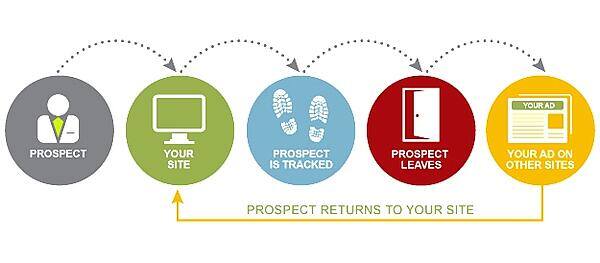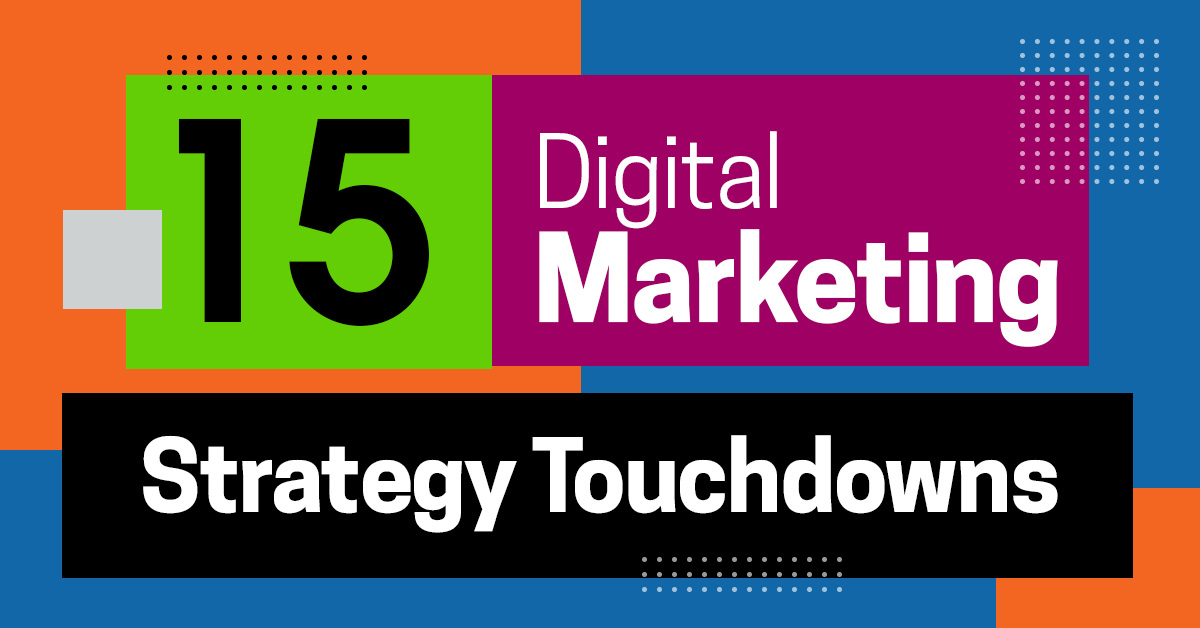“Digital marketing” has become something of a catch-all for any type of marketing done through the internet. If you use anything from Facebook to email lists and Google ads to drum up business, then you’re a digital marketer regardless of what kind of marketing materials you already have in print. Digital marketing has come a long way and it’s now integral for any brand to have authority, relevance, and most of all, qualified leads so here’s our roundup of the 15 most effective digital marketing techniques by category.
Digital Marketing Playbook: Paid Advertising
Paid advertising, or pay-per-click (PPC), relies on two different types of ads: search and display. In essence, you pay an ad network whenever people click on your ad hence the name. PPC remains the most common but there are other digital advertising models now where you pay based on the number of impressions or installation.
Search-based PPC ads are the SEM side of the search marketing coin. SEM is simply advertising through search engines like Google, where the network your AdWords campaigns run through charges for text-based ads. What makes SEM so effective is that you’re capitalizing on the user’s intent– they’re not only looking up what you’re offering, but clicking on an ad indicates more interest than browsing a link that comes up in organic search.
Paid ads also get higher and more prominent placement in search results to get users’ attention on purpose before browsing the organic results. Because Google ads have gone through multiple expansions over the years and can be enhanced with ad extensions containing important information like key features or benefits plus phone numbers that mobile users can dial with one tap, search-based PPC ads have remained a powerful digital marketing strategy.
Their counterpart, display ads, are not solely text. They have images and/or video in addition to text and don’t have to rely solely on search results. Rather, display ads go by interests and demographics once installed in ad networks that display on social media and any other website utilizing the ad network in question (such as AdSense).
Display ads can be native, or affiliate links from sponsors paying for specific placement on a third-party site. However, the most common form of display ads are on third-party websites running ad networks and relying on browser history. Using the fandom and media analysis site TV Tropes as an example, the site uses a combination of affiliate placement (the “Community Showcase” list) and third party ad network display ads. Currently, these in the sidebars and footer indicate a marketer who was looking up tax information.

However, once you actually get a user to click through one of these ads you need to do more than just have them come to your website. At the very least, there should be a specific landing page for where users to go after clicking the ad. If your PPC/SEM strategy evolves and becomes a central part of your lead generation, you can also create multiple landing pages customized to different ad sets and other criteria. Having well-made landing pages will prove crucial to your PPC strategy getting the best ROI possible.
While all SEM is PPC but not all PPC is SEM, there are also other forms of paid digital advertising to pay heed to.
Digital Marketing Strategy Touchdown #1 – In-App Advertising
Websites aren’t the only place that display ads. The mobile explosion of the past decade has been powered by a mix of users paying premiums and developers syncing with advertisers to meet each others’ needs. Marketers have utilized user data on demographics, location, and other pertinent information to better target their display ads to mobile app users.

In-app advertising has less precision than search-based PPC but still relies on basic demographic information that slightly target a potentially larger user base than search alone. Based on the user’s location, device, and the actions they take in-app it can make the display ads more relevant over time to improve conversions.
Digital Marketing Strategy Touchdown #2 – Social Ads
Facebook, LinkedIn, Twitter, and more recently, Reddit among other social media apps have developed PPC systems of their own for advertisers who’d like to extend their outreach to the leviathan user bases of these platforms. Facebook has the highest number of daily active users of all the major social media platforms in addition to the most fastidious data collection practices, so it tends to be a top priority for paid social media marketing.

What makes social media ads effective is that they’re being seen by a more highly-targeted group of people than search and in-app display ads alone. Facebook in particular allows for extremely segmented marketing campaigns to increase the likelihood of conversions for every stage of the sales cycle.
Digital Marketing Strategy Touchdown #3 – Retargeting Campaigns
Search, display, in-app, and social ads gather your prospects. Retargeting campaigns are intended to reel them back in if they didn’t take any actions after visiting your website. Retargeting is specifically designed for people who’ve shown interest since they’re more likely to convert than new leads.

Display networks like Google and Facebook have retargeting campaign options as do other kinds of digital marketing like email. Retargeting campaigns are common with shopping cart abandonment and users who didn’t sign up or make a purchase after coming to your site from a different ad or marketing campaign.
Digital Marketing Strategy Touchdown #4 – Going from Keyword Clusters to Single Keywords
When working with PPC ads, keyword clusters become the focal point opposed to a singular keyword. After all, people are searching for related terms or variations of the same term so most Google Ads accounts among other PPC types tend to have 10-20 keywords per ad group based on a theme or perhaps a buyer persona.

Keyword clusters can generate traffic but they also drain your ad budget and not produce many conversions if there’s too many unrelated broad-match searches that don’t align with the ad’s purpose and target audience. Hence, single keyword ad groups (SKAGs) are a more refined approach for SEM because they zero in on the highest-performing keywords. By configuring ad groups for exact and phrase matches plus modified broad matches (not standard), your ad budget will go a lot farther by focusing only on people searching for the exact term you have in mind. While it may not generate as much raw traffic, it reduces the number of unqualified leads and increases the click-through rate, quality score, and subsequently, conversions and revenue.
Digital Marketing Strategy Touchdown #5 – Shopping Ad Networks
SKAGs’ cousins are SPAGs, or Single Product Ad Groups. They are essentially SKAGs but for the Google Shopping ad network. Ad groups with a single product show more detail of this one specific product than what you’d get if you combined several products together into the same ad group. With this more fine-tuned approach, SPAGs can lend more insight as to which products trigger more searches, the actual cost of conversion, and other highly specific information.

It takes time to create Single Product Ad Groups but the results are outstanding!
However, this method is too granular if you sell thousands of products and it would take too much time and resources to implement. SPAGs are still a viable and versatile tool though since they can be focused on products that already performed well, and you’ll have a stronger ROI by focusing your budget on your best-selling items.
Digital Marketing Strategy Touchdown #6 – Taking the Single-Ad Approach on Facebook
Following with the theme to go single keyword on Google for both AdWords and Shopping, the same rules true of Facebook even though the dynamic is completely different between the two as Facebook advertising is based on interests while AdWords is based on intent.
If anything, it’s more critical to use to take a single-ad ad set on Facebook because there’s so much to go on as far as interests are concerned while you can allow for close matches on SKAGs in AdWords. Going single-ad on Facebook can laser-focus your audience based on the information that the platform collects about users for potentially higher ROI than search alone.
Digital Marketing Strategy Touchdown #7 – Building Smaller Ad Groups
What makes many PPC campaigns fail is that the focus is too broad because getting traffic has become the priority, opposed to less traffic but more qualified leads coming in from it. Too many search terms attached to a campaign, particularly too many broad matches, will lack in conversions because your offerings don’t line up with what they need.

Smaller groups that focus less on broad matches and more on narrowing down the search terms you want to target will keep your PPC campaign performing more smoothly.
Digital Marketing Strategy Touchdown #8 – “Panning for Gold” with Google Shopping
Unlike their AdWords counterparts, Google Shopping ads don’t have keyword-level control of search queries so “panning for gold” is the best strategy to use if your strategy entails ecommerce listings like Google Shopping.
What the “gold pan technique” does is it segments traffic for product searches based on generic (broad) searches, specific brands related to the search, and product-specific searches based on preferred ad groupings. By creating a “negative keyword” list where you’ve stricken off the keywords you don’t want to target for this campaign and creating other parameters like location and time of day to display your ads, you’re more likely to get gold nuggets instead of dirt.
By segmenting traffic, it also makes it easier to discern which ads aren’t getting any results and adjust your campaign budget in turn. Panning for gold allows you to gain a stronger ROAS (return on ad spend) because you’ve optimized your ads for the most profitable products and searches.
Digital Marketing Strategy Touchdown #9 – The Breadcrumb Technique
After users have interacted with your ads, they should be taken to a dedicated landing page. Traditionally, a “less is more” approach was taken with landing pages in that only the most important form fields and other information should be on a landing page to make users want to convert. It turns out that this approach doesn’t work.

You can have a landing page with beautiful graphics and layouts that navigates well on both desktop machines and mobile devices, but if the fillable form has a poor UX and comes off as too impersonal– or the opposite and getting too personal immediately– then users could actually be detracted from filling it out.
What the breadcrumb technique does is that it breaks up the form into multiple pages without demanding too much information upfront. It starts with simple questions that don’t get too personal but then don’t request personal information like name and contact information until 2-3 pages later. This method is also more effective than collecting email addresses alone because it helps you filter out unqualified leads from qualified based on their answers in the form.
Digital Marketing Playbook: Organic Marketing
The counterpart to paid advertising is organic digital marketing. This is the SEO, or search engine optimization, side of the search marketing coin. While SEM lets you latch onto users’ intent, SEO is your “street cred”. Having webpages that rank high in search engines is indicative of helpfulness and authority, in addition to having a clean house as far as your web development and content management goes.
Organic digital marketing is also slow-acting. It can take months to create quality content, build out links, and gain authority in search engines. It takes a while but is an equally important moving part of your digital marketing strategy because people tend to place more trust in content and social proof like review sites and social media. Both SEO and SEM will drive people to your website but the two concepts have different purposes.
Digital Marketing Strategy Touchdown #10 – Content Marketing
While slow-acting, content is the best value for your money in comparison to other digital marketing methods. An ad campaign budget can always run out but a blog post that solves a problem for your target audience that continuously gets shares, comments, and other engagement will live forever.

On-site blogging is usually what most brands start with but there are other types of content such as videos, podcasts, and images that can help establish your brand voice and give your audience what they want. Audiences and their wants can evolve over time so you need to pay attention to them through your various communication channels to find out what kind of content will resonate with them the most.
Digital Marketing Strategy Touchdown #11 – Link-Building
Link-building, or backlinks, is one of the cornerstones of a successful content marketing strategy. Getting other other websites to link to yours is how search engine rank increases. This can be done by publishing content on other websites with permission or reblogging on certain websites that allow user submissions (such as Gamasutra for the games industry). Other sites allow content exchanges and guest posts.
Your content also needs to have its own internal and external links. External links to reliable sources tell search engines what to make of your webpages, as linking to a reputable website grants more authority than linking to a suspicious or spammy-looking site. Internal links not only bump up search engine rank but they also create more engagement on the same page for the reader.
Digital Marketing Strategy Touchdown #12 – The Technical Sides of SEO
Content is the basis of SEO along with quality link-building but there are also several moving parts when it comes to the technical aspects of SEO. This would be the content optimization side where things like proper formatting and ensuring your website is crawlable by search engines come into question. Your backend code needs to be clean and not causing page speed to slow down or content to take too long to load. Removing broken links and orphaned web pages is an important “housecleaning” aspect of SEO you need to pay heed to.
Digital Marketing Strategy Touchdown #13 – Email Marketing
Email marketing is an old school method of digital marketing that still gets some of the best results. There’s simply far less blank space and headspace for an email to compete with in comparison to SEO, SEM, and social media marketing.

Email opens up so many possibilities for personalization and delivering valuable, relevant information in a more curated fashion that makes subscribers feel like they got something of value by signing up. Email marketing can be segmented based on demographics, the types of purchases made, and other information available through your marketing data.
Email campaigns can be helpful for both moving a sales funnel along and providing helpful content because the user specifically revisits it on their own terms without having to go to your website.
Digital Marketing Playbook: Other Digital Marketing Techniques
While these techniques fall under the digital marketing umbrella, they don’t quite fit in with SEM and SEO but are important to consider for your strategy no less.
Digital Marketing Strategy Touchdown #14 – Influencer Marketing
Influencers can be paid directly to promote your products to their large audiences on social media, or a more informal partnership that’s mutually beneficial.

If your social media following is lacking at the moment, partnering with an influencer can help you get social growth more organically than running a campaign to buy traffic.
Digital Marketing Strategy Touchdown #15 – Affiliate Marketing
Bloggers and other digital entrepreneurs are always looking for ways they can monetize their websites and sell products that are relevant to their audiences. Affiliate marketing is also an old technique that has vastly improved over the years.
There are plug-and-play affiliate programs like Amazon Affiliates, which is one of the largest in the world where users can create a variety of affiliate links and collect bounties for getting users to take specific actions like download the Kindle app. Other affiliate programs can be managed through third parties like Commission Junction where you can screen potential affiliates for their suitability to the brand, or simply let anyone create a display or text ad to buy your products on their website.

One drawback of this method is that your affiliate links can end up becoming backlinks to spammy sites if you don’t screen potential affiliates first. An upside is that by making the process easy, you can passively capitalize on your affiliates’ audiences and they also make passive income from the sales so they’re just as invested in the process.
Digital marketing has become an incredibly vast ecosystem over time, and it continues to evolve. All of these methods come together to work in harmony for a thorough and cohesive digital presence, and it’s become mandatory for brands to succeed today.









